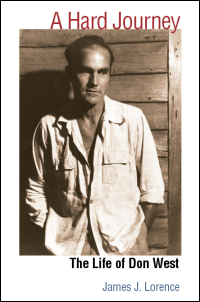 A persistent myth concerning southern workers was the assertion that even in the hardest of times, they were impervious to the force of radicalism that affected urban labor in the Depression era and beyond. Current scholarship, however, has begun to undermine these long-held assumptions as historians have focused on the activism of the Left, including the militant Communist Party, in several Southern states. Beginning with the path-breaking work of Robin D. G. Kelley (1990) and Mark Solomon (Mississippi, 1988), scholars have shown that the Communist Party was an aggressive competitor for the loyalties of dispossessed farmers and hard-pressed urban laborers in areas once thought immune to the virus of radicalism.
A persistent myth concerning southern workers was the assertion that even in the hardest of times, they were impervious to the force of radicalism that affected urban labor in the Depression era and beyond. Current scholarship, however, has begun to undermine these long-held assumptions as historians have focused on the activism of the Left, including the militant Communist Party, in several Southern states. Beginning with the path-breaking work of Robin D. G. Kelley (1990) and Mark Solomon (Mississippi, 1988), scholars have shown that the Communist Party was an aggressive competitor for the loyalties of dispossessed farmers and hard-pressed urban laborers in areas once thought immune to the virus of radicalism.
In recent years, increased attention has been focused on the economic hardship confronted by southern workers, especially under the pressures created by the Great Depression. A close look at the labor movement, for example, reveals that during the great uprising in the textile industry in 1934, southern workers were at the center of a labor stoppage unprecedented in scope. The textile strike demonstrated that southern workers responded to the initiatives of organized labor in what may best be understood as a moment of opportunity, only to be defeated by a combination of management recalcitrance and state suppression. Similarly, the rise of the Communist Party-led Unemployed Councils and Workers Alliance of America documented the increased influence of the Communist Party and Popular Front forces in the unemployed movement of the 1930s.
Since 2000 historians have taken advantage of the newly-available records of the Communist Party U. S. A. (CPUSA) to uncover the details of its work in the United States, including the southern states about which relatively little had previously been known. Greg Taylor’s work on the Communist Party in North Carolina (North Carolina, 2009) and Aaron Purcell’s exploration of party members in Tennessee (Tennessee, 2009) provide evidence of lively party activity the South. Perhaps the most important link in the chain of modern scholarship dealing with southern progressives is Glenda Elizabeth Gilmore’s comprehensive study of the Communist Party’s activity in the region, Defying Dixie: The Radical Roots of Civil Rights, 1919-1950 (W.W.Norton).
Taken as a group these publications attest to the lively scholarship that has emerged as the source base for such work has expanded. These writings address the currently controversial debate over the significance of local initiative in the activities of the CPUSA. Most adopt the perspective of the new history of American Communism, which emphasizes grass-roots activism, while acknowledging the controversy over external influence. In addition, the latest scholarship stresses the importance of cross-racial collaboration and class solidarity that sometimes produced effective political alliances. One thing is certain: it is now impossible to ignore the impact of an activist Communist Party in the story of southern progressivism. The presence of the radical Left must be part of any comprehensive understanding of New South social and political history. Progressives of all stripes helped shape another, as yet poorly understood “New South” that looked to the future as the region broke free from outworn traditions.
*****
James J. Lorence is a professor emeritus of the University of Wisconsin, Marathon County. His works include The Unemployed People’s Movement: Leftists, Liberals, and Labor in Georgia, 1929—1941 (University of Georgia Press) and the new paperback A Hard Journey: The Life of Don West (University of Illinois Press).
